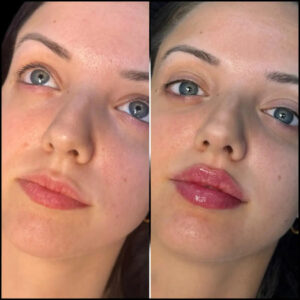
Paddle boarding is one of the fastest-growing water activities in the world, and for good reason. It’s relaxing, beginner-friendly, and a great way to enjoy nature while getting some light exercise. Whether you’re planning a peaceful session on a calm lake or a gentle paddle down a river, choosing the right board is the first and most important step for beginners.
If you’re new to this sport, it’s easy to get lost in the variety of paddle boards available — inflatable vs. solid, short vs. long, wide vs. narrow. The best paddle board for beginners should offer stability, durability, and ease of use. Let’s break down the essentials so you can pick the right one with confidence.
Focus on Stability First
For beginners, stability is everything. A board that wobbles too much can quickly turn an exciting new hobby into a frustrating experience.
- Width: A beginner board should be at least 32 inches wide. This gives you a stable platform to stand on without feeling like you’ll tip over at every small wave.
- Length: Boards between 10’6” and 11’6” are ideal for most new paddlers, offering a good balance between speed and maneuverability.
- Thickness: A 6-inch thickness is standard for inflatable boards and adds extra stability.
When learning, you’ll likely be paddling in calm waters. However, if you plan on trying Paddle Boarding in San Marcos, TX or other places with mild currents, a stable board becomes even more important for comfort and safety.
Inflatable vs. Solid Paddle Boards
One of the first choices you’ll face is whether to go for an inflatable (iSUP) or a solid board.
- Inflatable Boards (iSUPs):
These are perfect for beginners who need portability. They pack down into a backpack and are easy to store, making them a great option for those without a lot of space. Despite being inflatable, modern iSUPs are extremely durable and stable. - Solid (Epoxy) Boards:
Solid boards are generally faster and have a smoother glide, but they’re bulkier to transport and store. They’re excellent for performance paddling but might not be as forgiving for absolute beginners who are still learning balance.
Most new paddlers choose an inflatable board for its versatility and convenience, but the right choice depends on your lifestyle and storage options.
Board Shape Matters
The shape of your paddle board affects how it moves through the water.
- All-Around Shape: Wide at the middle, rounded nose, and good for various water conditions. This is the best shape for beginners.
- Touring Shape: Pointed nose, longer, designed for covering more distance. Better for intermediate to advanced paddlers.
- Yoga Boards: Extra-wide and stable platforms, great for stationary use like yoga or relaxation.
For your first board, an all-around shape is the safest choice, allowing you to explore different paddling styles without being limited.
Weight Capacity and Durability
Before buying a paddle board, check the weight capacity. This includes your body weight plus any gear you plan to carry. A board that is overloaded will sit lower in the water and feel unstable.
Durability is another key factor. Beginners may bump into docks, rocks, or other boards, so look for boards made with reinforced PVC (for inflatables) or high-quality epoxy (for solid boards). This will ensure your board lasts even with regular use.
Accessories to Look For
A good beginner paddle board package should include:
- Adjustable Paddle: Lightweight and easy to size to your height.
- Leash: Keeps you connected to the board if you fall off.
- Pump (for inflatables): A high-quality pump makes inflation much faster.
- Fin Setup: Removable center fins improve tracking in the water.
The right accessories can make your learning process smoother and more enjoyable.
Trying Before Buying
If you’re unsure which board feels right for you, renting is a smart option. Many paddle board rental spots let you try different models, so you can find the perfect balance of stability and comfort. This hands-on experience often saves you from making a costly mistake.
During my research, I came across Kayak Instruction, a well-regarded company that provides beginner-friendly boards along with lessons and rentals. Their boards are known for being sturdy, stable, and beginner-appropriate, making them a good reference for what to look for when buying your own.
Price vs. Quality
While it’s tempting to buy the cheapest paddle board you can find, it’s worth investing in quality. Low-cost boards may lack stability, durability, or the right accessories, which can limit your progress and enjoyment. A quality beginner paddle board usually falls between $400 and $800, though prices can vary depending on brand and features.
Caring for Your Paddle Board
Once you have your board, proper care will extend its lifespan.
- Rinse it with fresh water after each use, especially after paddling in saltwater.
- Store it in a cool, shaded area away from direct sunlight.
- For inflatables, make sure it’s completely dry before rolling it up to avoid mold or mildew.
Good maintenance ensures your board stays in top condition for years.
Your local water conditions should influence your decision. For example, calm lakes and slow-moving rivers are ideal for wide, all-around boards. If you plan to paddle in coastal waters or rivers with light currents, stability and durability become even more important.
If you’re exploring spots like Paddle Boarding in San Marcos, TX, where you’ll find a mix of calm and slightly moving waters, a stable, all-around inflatable board is often the best choice for beginners.
Conclusion
The best paddle board for beginners is one that offers stability, durability, and comfort while matching your lifestyle and storage needs. Look for a board that is wide, long enough for stability, and made from durable materials. Inflatable all-around boards are often the best entry point for most new paddlers, especially those looking for easy transport and storage.
Start with the right board, and you’ll set yourself up for a fun, safe, and rewarding paddle boarding journey. Once you gain confidence, you can explore more specialized boards to match your evolving skills and interests.




